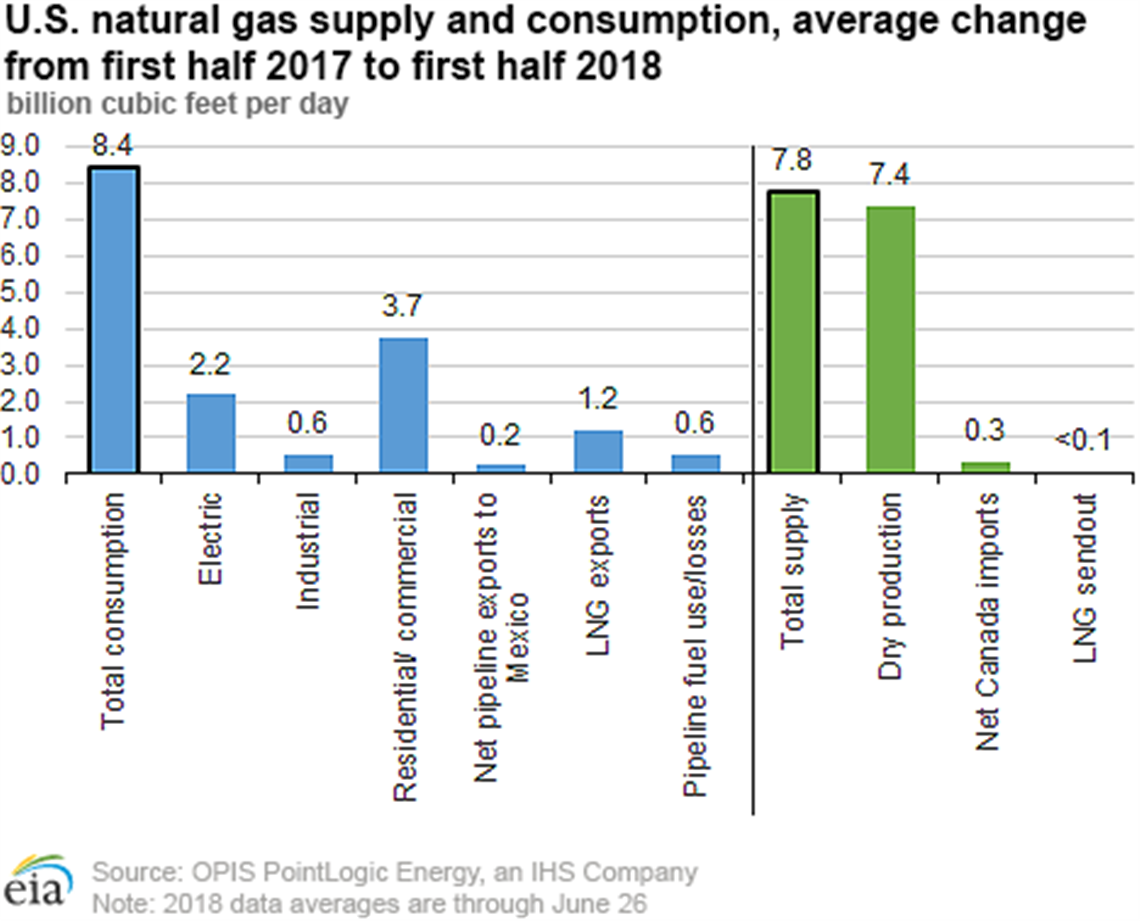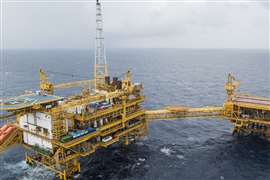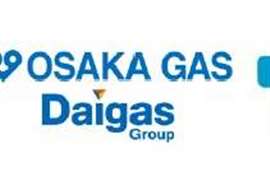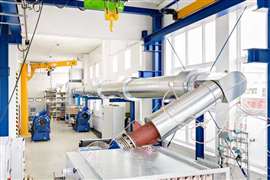EIA: Cold Weather Boosts Gas Consumption This Spring In Lower 48
June 29, 2018

Natural gas supply and consumption grew significantly in the first half of 2018 compared to the first half of 2017, the U.S. Energy Information Administration reports.
According to data from PointLogic Energy, total natural gas consumption in the Lower 48 states averaged 87.4 billion cubic feet per day (Bcf/d) during the first half of 2018, which was 11% greater than during the first half of 2017. The total supply of natural gas averaged 84.8 Bcf/d during the first half of 2018, a 7.8 Bcf/d (10%) year-on-year change.
The largest growth occurred in residential and commercial consumption, which rose by 3.7 Bcf/d (17%) compared to the first half of 2017. Residential and commercial consumption is primarily related to heating needs, and the beginning of 2018 experienced record, prolonged cold temperatures across much of the Lower 48 states, the EIA said. According to the National Oceanic and Atmospheric Administration, there were about 17% more population-weighted heating degree days (HDD) during the first half of 2018 than during the first half of 2017.
The volume of natural gas used for electricity generation (power burn) during the first half of the year increased by 2.2 Bcf/d (9%) from 2017 to 2018. Power burn is also related to temperature, as hot weather increases electricity consumption for air conditioning. However, 2018’s higher power burn was not a result of hotter temperatures; the number of population-weighted cooling degree days (CDD) in the first half of 2018 was similar to the first half of 2017, the EIA said. Instead, the increased power burn may have resulted from the increased buildout of natural gas-fired power plants, continued coal-to-gas switching, and the use of electric heating during the cold weather.
The increase in natural gas supply was driven by dry production, which rose 7.4 Bcf/d (10%) from the same period last year. Production increases were facilitated by the additional pipeline capacity brought into service since June 2017, including the Leach XPress, the Rover Pipeline, and Phase 1 of Atlantic Sunrise. Net pipeline imports from Canada increased slightly, likely related to the colder weather.
Overall, consumption increased 0.7 Bcf/d more than supply. This market tightening was reflected in the large storage withdrawals this year and the current low levels of natural gas in storage relative to the five-year average, according to the EIA.
MAGAZINE
NEWSLETTER

CONNECT WITH THE TEAM








